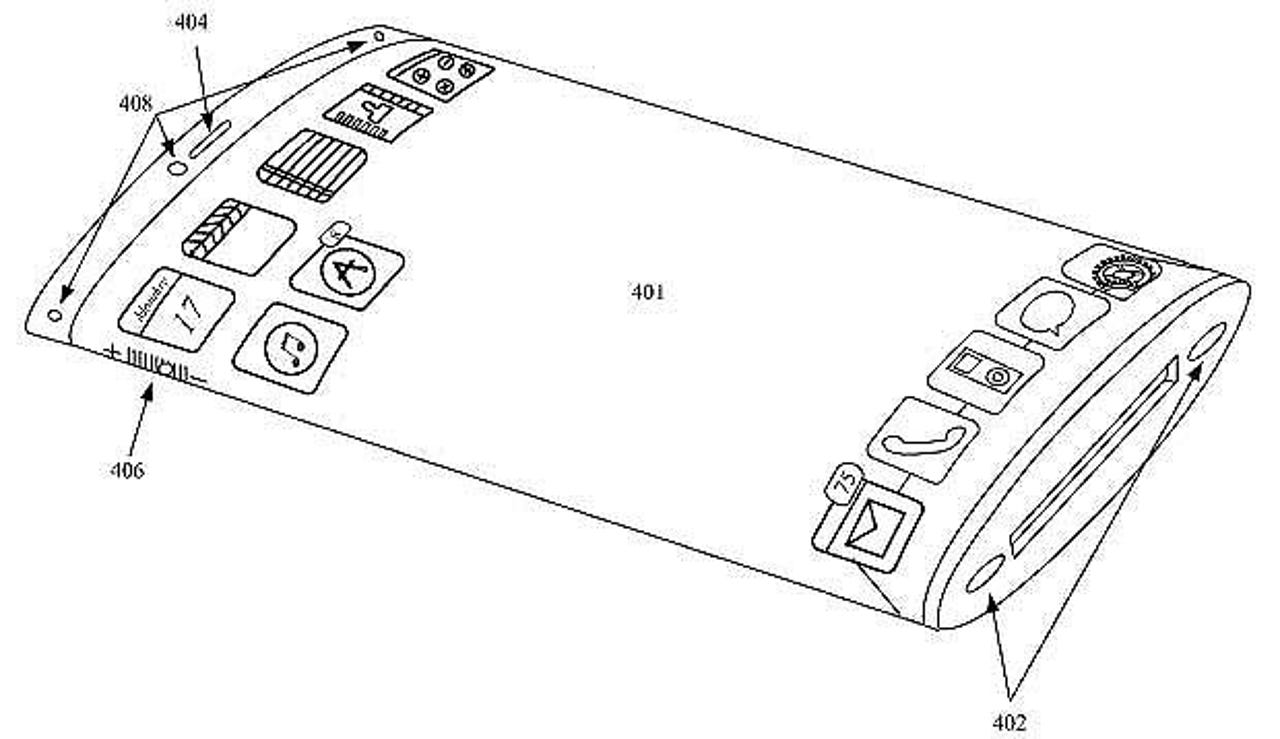Apple's new iPhone? Wraparound display, no buttons


Could a future iPhone feature a wraparound display?
According to a new patent filed by Apple, patent application 20130076612, a potential smartphone design could include a full wraparound display and have no buttons. Enclosed within "transparent housing," a flexible display panel would be configured to display content at any portion of the gadget's frame.
The patent application explains:
"The majority of portable electronic device manufacturers utilize a common form factor consisting generally of a flat planar form factor with a single surface dedicated mainly for use as a display surface, while the other surfaces remain largely unused, save for the occasional button or switch."
Potentially, the smartphone could contain up to two AMOLED screens. Standing for Active Matrix OLED -- these types of screen pair a traditional TFT display with an OLED display. Due to their active matrix, AMOLED screens have faster pixel switching, which means that response types are higher than OLED displays. The use of AMOLED and a conical shape for the flexible panel could offer users "an illusion of depth perception [...] mimicking a 3D experience."
In addition, the patent explains that facial recognition technology could be used to detect a registered end-user of the smartphone.
The aim of the new design is to make use of "unused space" which is typical with any current mobile device, extending functionality to both the back and the sides of a gadget. Therefore, Apple may be considering the use of curved screens and a flexible display which not only is touch-responsive, but makes use of the surface on both sides of a future iPhone.
The patent proposes that touch replace buttons entirely -- and a coating could be added to the display to reduce smudge marks and keep the gadget looking pretty. As an example, the application says that "Instead of the hold button a multi touch gesture along one of the sides could instead act as a method of locking and unlocking the hold function."
The new design relies heavily on flexible display technology, but in order to limit the possibility of damage, the patent describes the phone as being incased in glass -- bent into a conical shape, but serving as protection in case you drop your gadget. With such advances being made in the smartphone industry -- and the market already crowded with operating systems, similar phone designs and application ecosystems -- perhaps Apple's move into flexible displays could help the firm keep its dominant position.